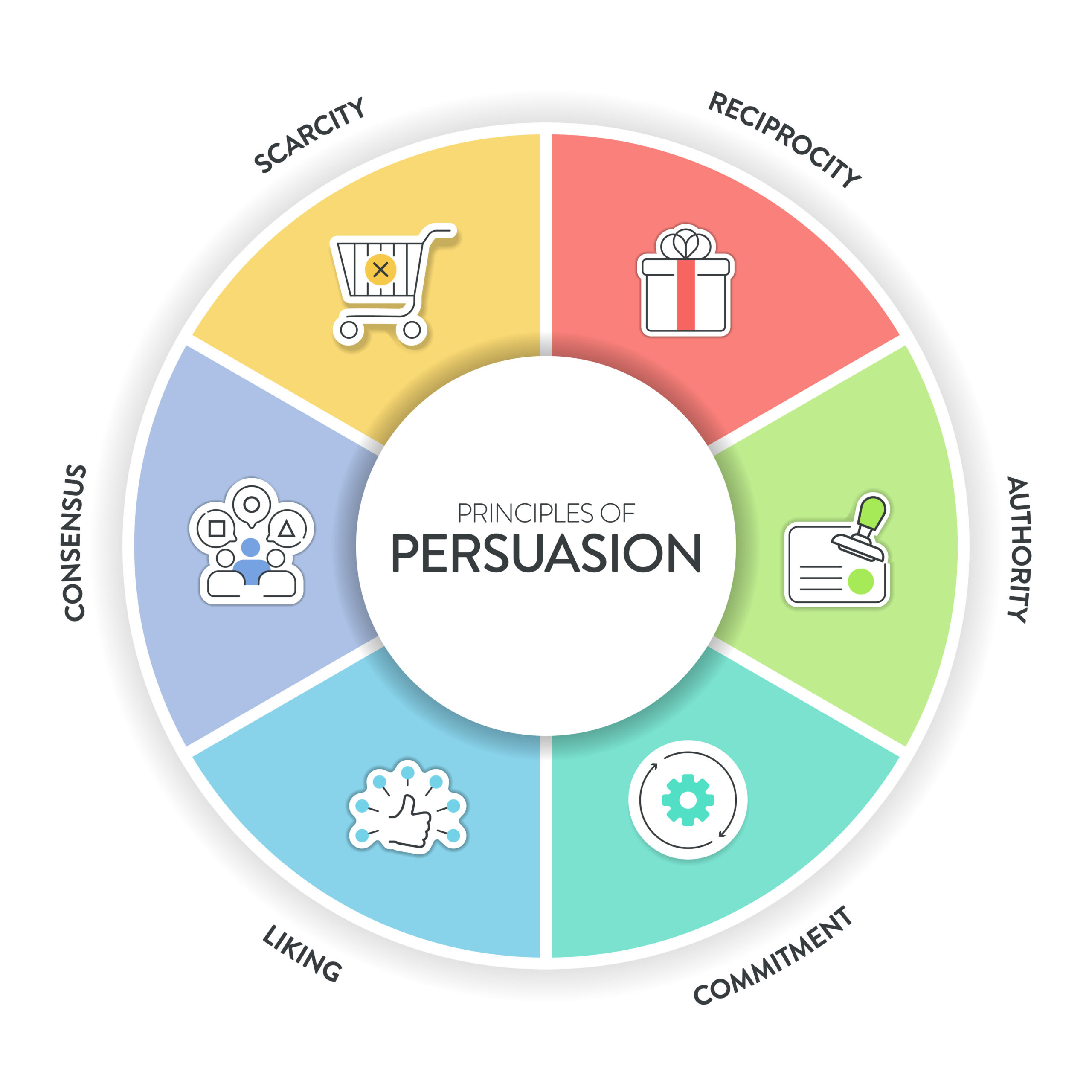Mastering Influence: Robert Cialdini’s Principles of Persuasion
In the dynamic business world, effective leadership often hinges on the ability to influence and persuade. Whether it’s inspiring your team, negotiating with stakeholders, or winning over clients, mastering the art of persuasion is a crucial skill for CEOs. One individual who has delved deep into the psychology of influence is Dr. Robert Cialdini, renowned psychologist and author of “Influence: The Psychology of Persuasion.” In this article, we’ll explore Cialdini’s six key principles of persuasion and how CEOs can leverage them to drive success in their organisations.
- Reciprocity: The Power of Giving First
Cialdini’s first principle teaches us that people are inclined to reciprocate when given something. As a CEO, this principle can be applied in various contexts. Whether it’s offering valuable insights to your team, providing resources to clients, or extending favours to partners, the act of giving can foster goodwill and build stronger relationships. By initiating the exchange, CEOs can set the stage for reciprocity, paving the way for collaboration and mutual support.
- Commitment and Consistency: Building Trust Through Small Steps
People naturally desire consistency with their past actions and commitments. As a CEO, you can harness this principle by encouraging small, incremental commitments from your team and stakeholders. Securing these initial commitments lays the foundation for more significant agreements and initiatives. Moreover, staying true to your commitments builds trust and credibility, further enhancing your persuasive influence.
- Social Proof: Leveraging the Power of the Crowd
Humans are inherently social creatures who look to others for guidance in uncertain situations. CEOs can leverage social proof by showcasing testimonials, case studies, and success stories that demonstrate the value of their products or initiatives. Building a strong personal brand and cultivating a network of influential connections can enhance your perceived authority and credibility, making it easier to sway opinions and garner support.

- Authority: Establishing Expertise and Trust
As a CEO, your position carries inherent authority, but true influence comes from demonstrating expertise and credibility in your field. You establish yourself as a trusted authority figure by showcasing your knowledge through thought leadership content, speaking engagements, and industry accolades. Furthermore, surrounding yourself with a team of skilled professionals and advisors can bolster your authority and enhance your persuasive impact.
- Liking: Connecting on a Personal Level
People are more likely to be influenced by those they know, like, and trust. CEOs can leverage this principle by building genuine connections with their employees, clients, and stakeholders. By actively listening, showing empathy, and demonstrating authentic concern for others, you can foster a positive rapport that paves the way for persuasion. Finding common ground and shared interests can further strengthen the bond and increase receptivity to your ideas.
- Scarcity: Creating a Sense of Urgency
The fear of missing out is a powerful motivator that drives people to act quickly. CEOs can harness the principle of scarcity by highlighting limited-time offers, exclusive opportunities, and unique value propositions. Creating a sense of urgency compels stakeholders to take action and seize the opportunity before it’s gone. However, using scarcity ethically and transparently is essential to avoid undermining trust and credibility.
Mastering Robert Cialdini’s principles of persuasion can empower CEOs to lead with influence and drive success in their organisations. By understanding the underlying psychology of persuasion and applying these principles strategically, CEOs can inspire action, foster collaboration, and achieve their business objectives more effectively. So, embrace the power of persuasion and unleash your potential as a visionary leader in today’s ever-evolving business landscape.
Contact us today to embark on this transformative journey together.
If you enjoyed this, you might like to check out our recent article “Cultivating a Growth Mindset: Igniting a Culture of Continuous Improvement and Innovation” or visit our YouTube Channel.


2 comments